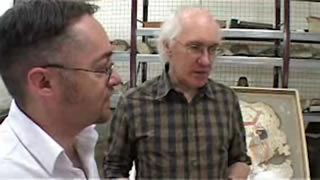2.4 Returning to Nebamun
The situation we are in, then, is this: we have to recognise that despite the fact that it is a painting of a sort, an ancient Egyptian tomb-painting is a categorically different kind of thing than a painting produced in the West during the last two or three hundred years when our concept of ‘art’ developed and painting became regarded as its paradigm. And by the same token, we have to accept that whoever made those ancient paintings, they were not ‘artists’ in our sense of the word.
Nonetheless, we unhesitatingly apply many of the same criteria to this ancient painting as we do to works of art in our own culture, both in terms of its manufacture and in terms of our emotional responses to it. We admire the skill of the ‘artists’ who made them. But more than that, in contrast to the gentlemen scholars of the early nineteenth century, we do feel able to extend a ‘human sympathy’ to some of these things – as if our conception of humankind has diversified along with our conception of its ‘art’. Even though the ancient painters would have had no framework to grasp the peculiarities of the modern conception of the ‘artist’, we increasingly feel that there is enough going on in terms of independent decision-making and insight on the part of individuals, of representational complexity and indeed a measure of knowledge and self-conscious modification of a relatively autonomous tradition of activity, to call them ‘artists’ making ‘art’.

Watch this video in which Richard Parkinson and Paul Wood talk about the wall paintings as art.
At one level, the Nebamun tomb-chapel paintings are not the kind of things we understand by our term ‘art’ and the people who made them were not ‘artists’ in our sense. Yet in another sense, of course, they were: our category is flexible and open – as the vast range of books, films and even courses like this one testify. We simply have to be alert and try not to carry over aspects of the meanings of such words as ‘art’ and ‘artist’ that do not fit the case. Even though the Nebamun paintings are paintings of what was once modern life, and even though they seem to show that life in vivid naturalistic detail, they are not Impressionist paintings, and their authors were not Degas or Renoir, transplanted back three thousand years from the banks of the Seine to the banks of the Nile. But for us, despite all that, they are ancient Egyptian art, and their authors were ancient Egyptian artists. So long as we accept that art is a mobile category, no harm is done; the problems arise when we transport criteria from one historical or geographical situation to another where they do not apply.
There is nothing to be gained by withholding the concept from ancient funerary paintings because they were made for different purposes by craftsmen who did not even have a word for ‘art’ in our sense; just as there is no point in saying that they are ‘real’ art, evidence of an unquenchable human drive to aesthetic expression, shared for example by Rembrandt and Van Gogh, whereas a urinal or a pickled shark in an art gallery isn’t.
